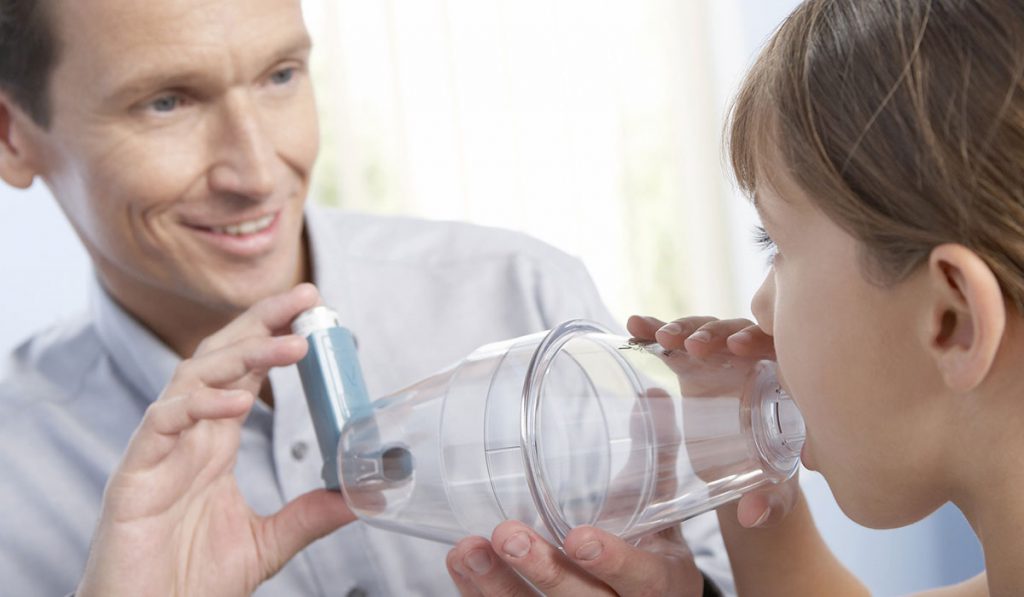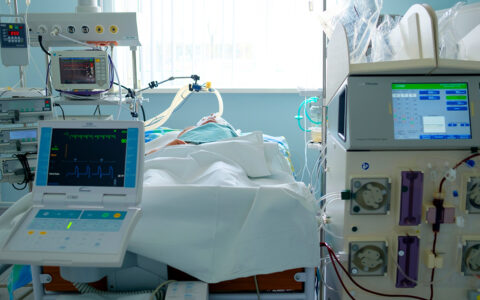The first implementation of a clinical practice guideline (CPG) standardizing treatment for asthma care across all units in a children’s hospital resulted in reduced length of stay (LOS), admissions, ICU services, and charges.
The results were achieved without affecting 30-day all-cause readmissions or 72-hour asthma revisits to the ED. They show full cooperation of all units can significantly reduce resource use and save money in a hospital system.
The development and use of effective managed care guidelines are especially important as asthma is the most common chronic childhood illness and a significant cause of hospital admission and death in children.
The CPG study, conducted at Monroe Carell Jr. Children’s Hospital at Vanderbilt and published in the February 2018 Pediatrics journal, was the first study, to the researchers’ knowledge, to implement an asthma CPG across all units in a hospital. Previous studies had either not included ED or ICU care.
“The success of this CPG reflects the collective effort of the emergency department, critical care, hospitalist, pulmonary, and pharmacy teams working together to improve the asthma care of children admitted to our hospital,” said Michael O’Connor, M.D., assistant professor of pediatrics and member of the pulmonary division.
Collaboration the Foundation of Guideline’s Success
Children age two and older with a known diagnosis of asthma, including those referred from urgent care or an ED, were part of the CPG. The study gathered pre-implementation data from May 2012 to April 2014 for 3,650 patients, and post-implementation data from May 2014 to June 2016 for 3,466 patients.
Collaboration was the foundation and key tenet of the CPG, with an expansive interdisciplinary team gathered to decide how to standardize asthma care.
The guideline was developed by an Asthma Steering Committee that included pediatric primary care, pulmonary, emergency medicine, hospitalist and resident physicians; pulmonary and critical care nurse practitioners; and pediatric respiratory therapists, pharmacists, nurses, case managers and quality consultants.
The CPG was implemented hospital-wide via an electronic inpatient order set, publication of the CPG with a reference packet on the hospital intranet, and in-person and electronic education by committee members.
Key Changes and Steps Lead to Reduced Admissions and ICU Care
One key change that had been made a few months prior to implementation was a shift to giving dexamethasone to patients on presentation to the ED rather than an oral prednisone and/or prednisolone. Dexamethasone use went from near zero percent to 85 percent of patients receiving it after CPG implementation.
Another key step in the CPG usage was the development of an asthma-specific ED order set, which was made one year after CPG implementation. Once that order set was put into practice, the percent of patients seen in the ER who were admitted dropped from 23.5 percent to 18.8 percent and was sustained for 13 months.
Once initial data was shared, the percent of hospitalized patients requiring ICU care decreased from 23 percent to 13.2 percent.
Eight months after CPG implementation, data began to be shared with clinical teams by posting on bulletin boards in the ED area and inpatient work areas. Once initial data was shared, the percent of hospitalized patients requiring ICU care decreased from 23 percent to 13.2 percent and was sustained for 18 months.
The data suggest the CPG increased in effectiveness once results could be seen in real-time by all involved.
“The ability to visualize these quality improvement efforts have led to sustained improvements in our asthma efforts,” said Paul Moore, M.D., professor of pediatrics and pharmacology and director of the Division of Pediatric Allergy, Immunology, and Pulmonary Medicine.
Significant Cost Savings Achieved
Overall, during CPG implementation, LOS for ED treat-and-release patients was reduced from 3.9 hours to 3.3 hours and sustained for 15 months. LOS for asthma inpatient admissions was reduced from 1.52 days to 1.33 days.
The average total charges per asthma encounter dropped from $4,457 to $3,652, a drop of $805 per encounter that works out to an annual cost savings of about $1.36 million based on an assumption of 1,700 asthma encounters per year. The average charges for ED treat-and-release patients rose slightly during the study but was offset by the avoidance of admissions and ICU care, which may show benefit for more intense treatment in the ER.
“We hope that this effort will not only continue to improve the care at our hospital but also at other children’s hospitals around the country,” O’Connor said.





